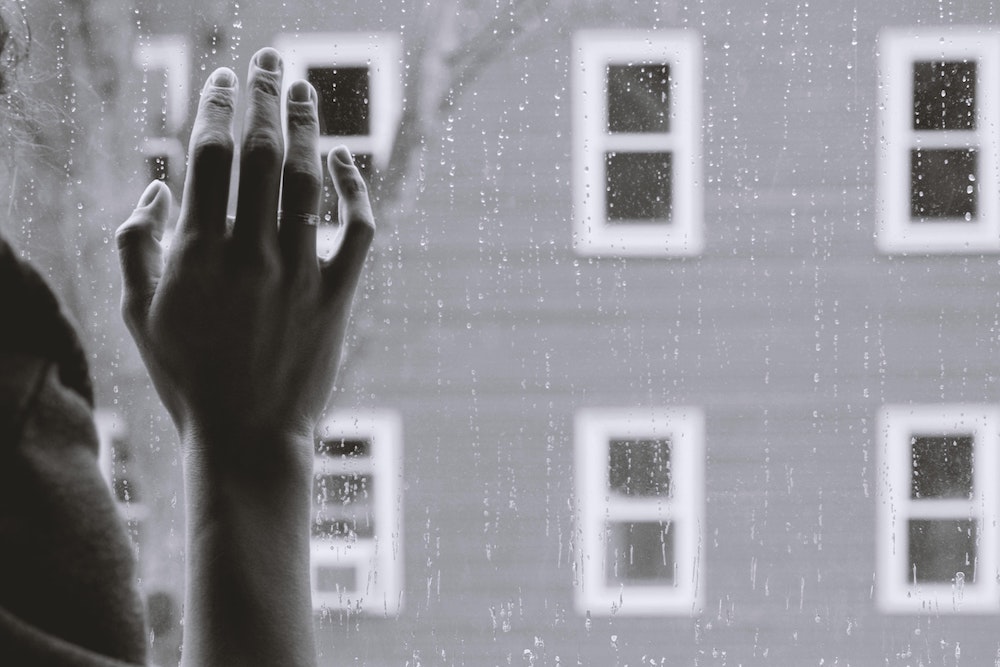The COVID-19 pandemic triggered everyone all around the world at the same time. People most commonly report feeling fear, anxiety, and loneliness during this time. And due to the uncertain nature of the pandemic’s timeline, there isn’t a clear pathway to feeling grounded again.
Unacknowledged Grief and the Pandemic
Unacknowledged grief is triggered for most people during the pandemic. When grief is triggered, especially when we are unaware it being triggered, it can create an intensity attached to the feeling we are registering. This is because it traces back to our original grief.
Original Grief
Original grief is the perceived awareness of our earliest emotional woundings. When this gets tapped into, whatever we are currently dealing with seems exponentially more severe. Original grief typically forms during ages zero through five, when we are most vulnerable to being shaped by life’s circumstances. The foundational emotion attached to the pandemic is grief. Grief, if not acknowledged, felt, and addressed, will continue to trigger the more easily identifiable emotions such as fear, anxiety, depression, and whatever other feelings and reactions typically present for people in a crisis.
The COVID-19 pandemic is a perfect example of how understanding the different types of grief, especially original grief, can be helpful to us when we experience current daily triggers. Our deep grief awareness can better inform the tools we implement to ground ourselves.
Traditional Grief
The most easily identifiable grief the COVID-19 pandemic is creating is traditional grief. Traditional grief is the grief we feel when someone dies. Traditional grief, for many of us, is the only type of grief of which we are aware. Most of us are only aware of acknowledging grief for ourselves or others in the event of death and dying.
The biggest fear about COVID-19 revolves around the possibility of getting sick. People fear that themselves or a loved one will die from it. As of September 2020, almost 188,000 Americans have died from COVID-19, and there have been approximately 664,000 deaths around the world, excluding the United States. In seeing the number of COVID-19 related deaths around the globe, it’s easy to become overwhelmed by fear and anxiety. It is also easy to think that if we or a loved one contracts COVID-19, death is inevitable.
Ambiguous Grief
Another type of grief that is widely prevalent during the time of COVID-19 is ambiguous grief. Ambiguous grief is the grief we feel when a relationship ends or when we lose a loved one in our life who is still living. We also feel ambiguous grief when we lose something important to us, or when we have the awareness of something important we never had (Caudle, 2018). Ambiguous grief can be ongoing, because there is no closure as there is in traditional grief (Boss, 2006).
During the pandemic, ambiguous grief has certainly been ongoing for many of us. Most of us have lost relationships, in-person connections, and our ability to move around our communities. Most people do not realize the primary emotion being triggered is ambiguous grief. Typically, if we do not know what we are feeling and where it comes from, then we can not effectively address it. Instead, people may believe they are feeling anxious, scared, or lonely, when in reality, their deep grief is being triggered, and the felt awareness is anxiety and fear. Also, since there is no real sense of when the pandemic will end, ambiguous grief is constantly present and creating ongoing insecurities for many.
A Lack of Human Interaction
The pandemic is triggering many types of ambiguous grief. Currently, the ambiguous grief I see most is the grief people feel from the loss of daily interactions with others due to physical distancing. This has created a sense of isolation and loneliness for so many people. Many of us are feeling ambiguous grief from the loss of in-person relationship interactions. The interactions we miss can be either significant relationships or random interactions with people we do not know well at all.
For instance, a simple conversation with the checkout person at the grocery store or a simple chat with a stranger in a park can serve as a type of spontaneous connection. For many of us, these interactions are not occurring. Many sorely miss live human interaction during this time, and our brains notice the loss of connection. Our brains are hard-wired to connect (Bowlby, 1980), and the pandemic removed person-to-person connection for many people. Some people who live alone or in other isolating living circumstances have not had a face-to-face conversation or felt a hug from another person in five months or more. This taps into their deepest sense of original grief aloneness (Caudle, 2018).
Learning to Have Intentional Connections
Physical distancing during COVID-19 forces us to learn to have intentional connections with others, rather than spontaneous connections. It’s necessary to learn if we want to feel emotionally healthy and maintain healthy relationships. Intentional connections during COVID-19 are exactly what they sound like. These are ways of meeting with others that we discuss and agree upon, as related to social connection, safety, and virus prevention. So, rather than just communicating and deciding what fun activity we want to do, we actually plan with whom, as well as how, we can connect in a safe way.
COVID-19 has forced many people to make decisions about who we want in our inner circle of social connections. People who are being responsible and observing CDC recommendations during COVID-19 have chosen a short list of friends they can trust to socialize with during this time. Some relationships are blossoming and some are deteriorating.
Living in isolation is difficult for many, and not everyone can handle conscious connection for safety purposes. For many of us, the removal of spontaneous interactions has required us to pivot and create new ways of connecting. People frequently utilize Zoom, FaceTime, Skype, and many other platforms during this pandemic in efforts to stay connected. Those who can transition into intentional connection during COVID-19 are doing fine. But people stuck in their original grief, without knowing how to create intentional connections, are not doing well. Mental health concerns like depression, anxiety, post-traumatic stress (Cullen, Gulati, & Kelly, 2020), addiction (Du et al., 2020), relationship issues, domestic violence (Boserup, McKenney, & Elkbuli, 2020) and other issues have increased during the pandemic.
The Loss of Normalcy
Another type of ambiguous grief most of us feel is the sadness around the loss of our ‘normal’ way of living life. For example, leaving our homes to go do anything—grocery shop, work, school, spiritual gatherings, and socializing—are all activities we used to be able to do without thinking about our health being in jeopardy. The pandemic entirely stripped these ways of living from us in some cases. And if we can still perform an activity, we must prepare for our safety in order to do it.
We’ve lost the ability to engage in so many of our regular activities since the onset of the pandemic. Marriages, funerals, graduations, birthdays, going-away celebrations, sports, competitions of most kinds, and many types of intimacy. Most of us took many of life’s daily activities for granted before the pandemic. Now we are feeling ambiguous grief because much of what we used to do is not possible at this time. We are feeling a loss of our freedom to connect and move about in society.
Addiction Recovery and the Pandemic
The pandemic particularly triggers those in addiction recovery. The shelter in place regulations require disconnection, but addiction recovery is about learning how to connect.
One of the main components of addiction recovery is learning how to have healthy relationships and connect deeply with others. When in-person therapy sessions, group therapy, 12 Step meetings, etc. are removed from the recovery plan on an in-person basis, it can be difficult for people to pivot. Learning to connect via teletherapy or video meetings can be challenging, especially if connecting was a challenge before the pandemic.
Some people in recovery have transitioned nicely to video meetings. Others have not. For those who have not adjusted easily, recovery may be at a standstill, or possibly even in a relapse. Fortunately, some people in addiction recovery have used the extra time to do more recovery work and self care, while acknowledging their grief. This has provided an opportunity for further growth.
Having grief awareness and utilizing recovery tools to intentionally connect are critical to staying in sobriety and recovery.
The pandemic is certainly a trigger for most of us during this unprecedented and difficult time in our world. If we can be aware of the deeper feelings underneath, like the various kinds of grief, then we can be more self-aware. And with this awareness, we can take active steps to healing our ultimate trigger of original grief.









1 Comment
Excellent article about grief and the pandemic by Sophia Caudle! I have forwarded it to a sponsee with huge grief and loss issues who has hung in there so far. She is definitely having trouble fitting in, lost many friends who don’t care to wear a mask, and carries a lot of anxiety about her compromised immune system. I think this article will help her tremendously because she talks of her feelings constantly but can’t point to any reason for them. Thank you so very much!! I know she will be able to deal with all those feelings on a deeper level with your insights.